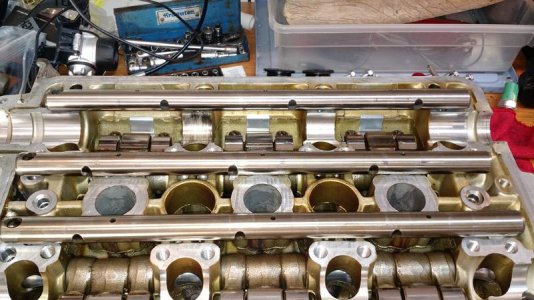Just my experience regarding the factory specs on oil pressure.
My racecar's engine upon purchase had 'in spec' oil pressure but still have completely wiped mains. Upon replacing the mains and oil pump gear, the oil pressure measured at the oil pressure sending unit as you are, would exceed 90psi fairly low RPM (3000rpm) vs your 65 @ 4000rpm, and as regan mentioned, on load, well exceeded 100psi and maintained.
Thanks for the Input!
I might be preaching to the choir here, so I apologize in advance if I am. I would expect to see a pressure increase at lower rpms due to the increase in flow from a high efficiency pump, if that's what you installed. At higher rpms pressure/flow is going to be limited by the relief spring in the pump and by the resistance to flow built into the motor. Fresh mains will also increase pressure just due the tighter tolerances through the mains resulting in a greater resistance to flow, which is dependent on the speed that positive displacement pump is spinning at. Pressure by itself is not necessarily indicative of good or bad oil flow. Pressure is static. The manual states only the min. pressure of 50# at 3000 rpm so I don't know what the max pressure is at a given rpm/flow rate. In vtec the system expects to see 57# at 6000rpm coming out of the far end of the crankshaft. If it doesn't, it assumes that there is a pressure/flow loss at the crank so it cuts off vtec oil in attempt to save the motor. You could also have ridiculously high pressures due to too much resistance to flow, but with very little flow. There are other variables that could have caused your wiped mains like possible momentary loss of pump suction due to g forces, inferior oil, or wrong viscosity. When I bought my car it had 40w oil and it sat in storage for 15 years up North with only 6k miles put on it, so it's hard to say how long it sat there between starts and starts in cold weather. The longer it sat between starts, the less oil film was left on the bearings to provide lubrication until the oil pumped through the system.
I'll do another pressure test at the pump when I resolve the vtec issue. I don't plan on tracking the car anytime soon, but when I do I'll install a HE pump and probably an Accusump.







